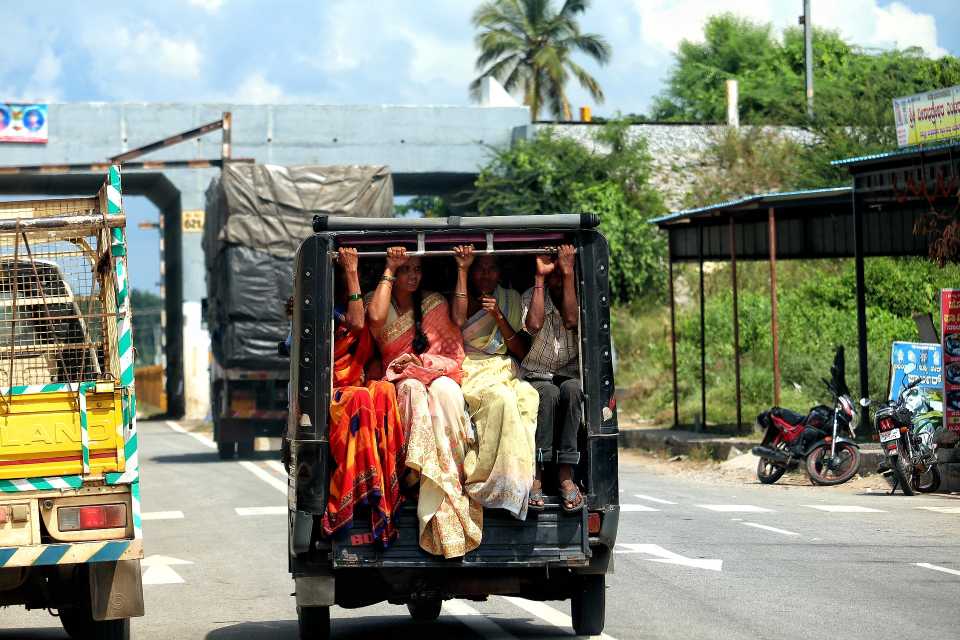The COVID-19 pandemic has wreaked havoc on most parts of the world, restricting activities and movement. People have been forced to deal with restrictions on their usual ways of travel, and in many cases on travel altogether. These restrictions have social and economic costs, disrupting global supply chains, social interactions, and access to livelihoods. Despite being necessary (even crucial) in our fight against the virus, we still struggle with these imposed limits to our mobility. But there are groups of people who have always struggled with imposed limits, either restricting them to certain modes and times of the day to travel, or forcing them to stay home. And unlike the current situation of necessity, these restrictions are often based on archaic cultural norms, a perception of a lack of safety, or a sense of control.
Access is gendered, whether it is to land, money, property, rights, or even skills.
Transport is no different. The everyday mobility of women is not determined by simple factors like availability or proximity to transportation but a set of complex issues. This article explores two different concepts around women’s mobility in urban spaces. The first is to look at how women’s mobility needs are unique compared to that of men. The second is to look at how these unique needs shape their daily mobility and access.
Women’s unique mobility patterns
According to the 2011 Census of India, women and girls make up close to 50 percent of our urban population. They comprise only 19 percent of ‘other workers’ ie, workers other than agricultural labourers, cultivators, and home-based workers and this is the only category of people we have mobility information for. Yet, 84 percent of women’s trips are by walking, cycling, or public transport. National Sample Survey Organisation (NSSO) data also shows that more than 60 percent of both rural and urban households use the bus as their primary mode of transport, followed by auto-rickshaws. This clearly shows that women primarily depend on public transportation for their travel needs, and a bad public transit system can have a direct and disproportionately higher negative impact on women.
Women’s formal workforce participation is low at 14.7 percent. Women are mostly employed in the informal sector in our country, due to which most workplaces that women travel to are not in the central business districts of cities. Women’s trips also tend to be during off-peak hours. Owing to their care work responsibilities, women often leave the house after the men have left for work and before the children come back from school—hours during which the frequency of public transport is lower, thus increasing their waiting time. Hence, transport planning typically caters to the needs of men employed in the formal sector, who travel from periphery to centre in the morning and back in the evening. It does not cater to the travel patterns and needs of a large portion of women, particularly those working in the informal sector.
Transport planning does not cater to the travel patterns and needs of a large portion of women, particularly those working in the informal sector.
Women’s travel is also characterised by ‘trip-chaining’. They generally combine multiple destinations in one trip because of a double burden of economic activities and care-related activities. For example, going to the office might involve dropping off children at school on the way, and coming back from a leisure trip might involve picking up groceries. Due to this, women’s trips are generally shorter, more in number, and often require that they travel in the opposite direction of the final destination, diverting from the most direct route, and/or breaking the whole journey into multiple legs. Public transport agencies typically set up fares such that multiple short trips cost more than a single long trip. Women end up paying more than men because of the difference in travel patterns.

Mobility is the primary connection between women and opportunities for economic independence and bears a huge impact on women’s empowerment. The World Bank states that women’s mobility is affected by restrictive socio-cultural norms, a lack of safe and sufficient transport infrastructure, gender-blind planning and governance, and a lack of access to information and communication technology.
Women’s forced mobility and immobility
Women step out of the house for multiple reasons. In some cases, mobility is even forced. For example, women living in lower-income settlements or areas that lack basic facilities such as water and sanitation are often compelled to travel to access sanitation facilities or collect water. However, the opposite of this forced mobility is forced immobility, which is caused by a number of factors including but not limited to economic poverty, time poverty, social norms, and the perception of safety.
1. Economic poverty
Research at the intersection of women’s economic poverty and mobility highlights the fact that for the urban poor and women, transport plays a dual role—as a service to be consumed, and as a connection to opportunities. In cases where expendable income is not available, women are forced to reduce the number of trips and when that is not an option, they primarily depend on walking because there is no direct economic cost to it. Though cycling is a good alternative, usage is quite low due to social stigma and/or harassment faced on the street.
2. Time poverty
Women also face time poverty, which is the lack of time for rest and leisure after accounting for time spent working (in the labour market or performing domestic tasks), and on other activities. Women’s greater domestic responsibilities coupled with their weaker access to household resources can result in the use of less expensive and slower modes of transport, especially when they are from lower-income groups. This means that if compelled to wait too long they may have to give up on the whole trip. Women often plan their trips more strictly than men since their trips are also interlinked with children’s school timings and the times at which family members return home.
3. Societal norms
Societal norms that dictate that the man in the family is the breadwinner are also likely to lead to women becoming the first to give up on trips that cost money and time (especially if it allows the husband to go to work). In many cases, children’s school timings and locations also prevent women from having their own travel plans because women are still held responsible for the care of children.
Women turn down better-paying jobs if the travel conditions are not safe or require travel at odd times of the day.
A study by the Asian Development Bank states that women turn down better-paying jobs if the travel conditions are not safe, require travel at odd times of the day, or do not satisfy other lifestyle conditions. Apart from safety, women also place importance on comfort and quality because they often travel with children and elderly whose physical safety depends on it.
4. Perception of safety
The final element of forced immobility is also probably the most important because it is something that is imposed upon women by society, and by women upon themselves. The lack of safety in public spaces and public transport remains the most concerning aspect of mobility. Even in cases where individual women have not faced any direct form of violence, the fear of what might happen continues to be a deterrent. This limits women’s movement and the distances they travel alone.
The harassment that women face is normalised and has become an everyday phenomenon that everyone assumes to be the norm.
The risk of sexual harassment also has a major impact on women’s mobility, accessibility, and confidence. Multiple studies conducted by organisations in Delhi, Mumbai, Guwahati, Bengaluru, and Chennai show disturbing trends of high levels of sexual harassment faced by women while waiting for or using public transport. The harassment that women face is normalised. It has become an everyday phenomenon that everyone assumes to be the norm. Apart from the actual victimisation, the fear of it can also have a crippling effect.
The need for gender-responsive mobility planning
Freedom of movement, mobility rights, or the right to travel is a basic human right, as declared in Article 13 of the United Nations’ Universal Declaration of Human Rights. The question is then, why are women in India not as mobile as men?
Mobility planning is not as well thought out, considering the specific needs of women.
The answer to that is a simple one. A report by the OECD states that, “Gender is one of the key socio-demographic variables that can influence travel behaviour, but it is often the least understood.” Whether it is for education, employment, or regular household chores, women stepping out of the house is a decision that is thought through carefully. Mobility planning is not as well thought out, considering the specific needs of women. In other words, it is not gender-responsive in nature.
Women are forced to make strategic decisions to overcome this lack of planning. They are put in a position to demonstrate that they deserve a certain level of safety, whether it is by travelling in groups, wearing only certain kinds of clothes, not being in public spaces after a certain time, and so on. This prevents them from accessing educational opportunities, jobs, and in some cases, even healthcare.
Mobility is the fulcrum that connects women to economic independence, which will in turn ultimately take us closer to the goal of women’s empowerment. Hence, it is of critical importance that we ensure that mobility planning is gender-responsive and accommodates the needs of the most vulnerable sections of society.
—
Know more
- Refer to the work of the Sustainable Urban Transport Project on gender-responsive mobility here.
- Read the CIVITAS study on gender and transportation in Europe here.
- Learn about Vienna’s gender-responsive urban planning here.
- For a deep dive into gender and cities, consider reading the book Why Loiter? and the first two chapters of the book Invisible Women.
Do more
- Audit your street on the Safetipin app so that others are informed about the level of safety on the street.
- Stay informed about your state women’s commission. In case there is no women’s commission in your state, you can refer it to the womcommatters team who have successfully campaigned for the establishment of the commission in Telangana.
- Follow and get involved with campaigns such as Main Bhi Dilli and the work of Citizens for Bengaluru.





